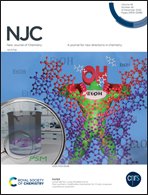Application of surface-enhanced Raman spectroscopy as a diagnostic system for the highly sensitive monitoring of the evolution of subarachnoid hemorrhage-induced complications†
Abstract
Cerebrospinal fluid (CSF) is a liquid substance that surrounds the brain and spinal cord, and is composed of water, amino acids, and multiple chemicals, and plays a vital role in maintaining neural structures. In this study, by employing the tip branched angular enhanced nanoarray platform as an biosensor, we designed a strategy for the identification of subarachnoid hemorrhage (SAH) and its induced complications by surface-enhanced Raman scattering spectroscopy (SERS). The SAH animal model was first used for dynamic monitoring, and principal component analysis (PCA) was applied to analyze the obtained SERS spectra so that the relevant component changes during the dynamic process of the disease could be clearly distinguished and monitored. Furthermore, to ascertain whether this SERS biosensor could provide meaningful information for the early identification and prediction of SAH-related cerebral vasospasm and hydrocephalus complications, we investigated the clinical sample's levels of SAH. We demonstrated that the SERS biosensor chip has good stability, reliability, and accuracy, which provides a great foundation and strategic possibility for the exploitation of sensing platforms to forecast numerous complications of various neurosurgical disorders.



 Please wait while we load your content...
Please wait while we load your content...